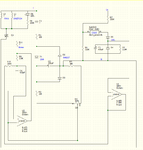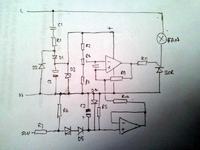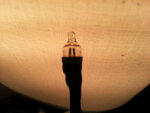Bluffer
Newbie level 6

My bathroom extractor fan failed. I took it apart and found a burned component. I was interested to see how the circuit worked in order to spec the replacement part so I drew the circuit diagram below. Trouble is I can't figure it out and really need some help. Could you describe the operation of this circuit in a helpful paragraph? Please? A high level overview sort of explanation to get me started is what I'd like. Many thanks...
L=240VAC
Ls=240VAC supplied by switch
N=Neutral

L=240VAC
Ls=240VAC supplied by switch
N=Neutral



